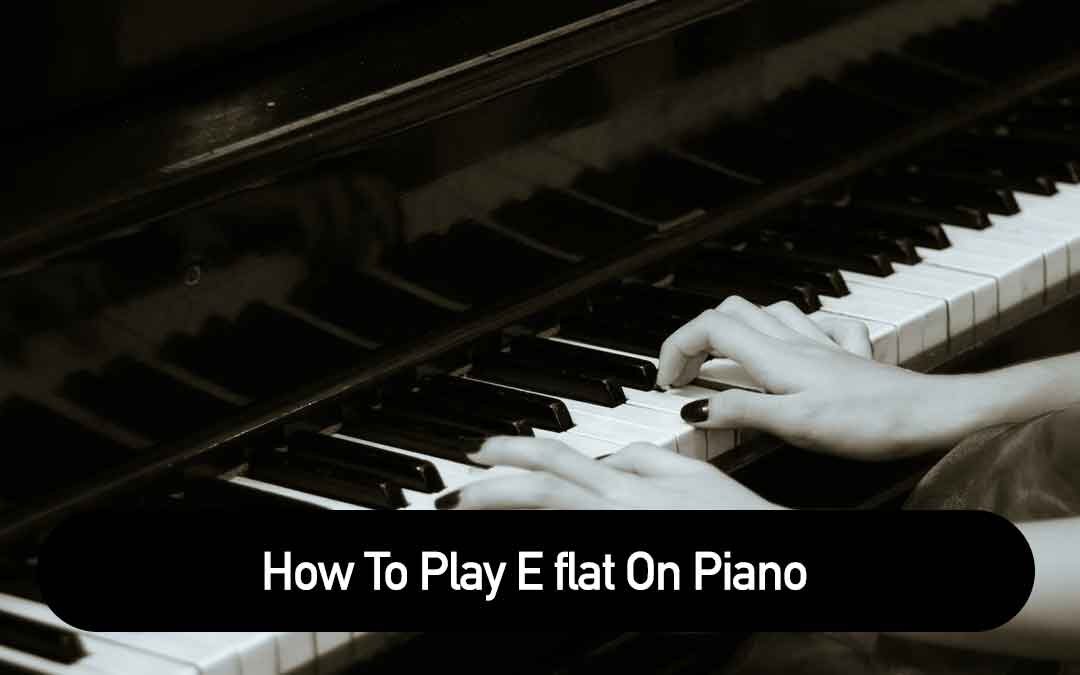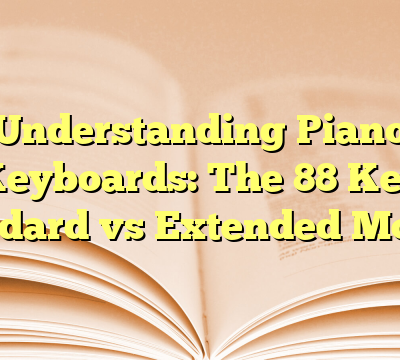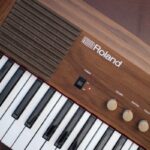Piano chords are an essential part of playing piano effectively. If you're a beginner piano player, you may wonder, “how to play an E flat chord on a piano?"
E flat is a commonly used chord in music, and it's relatively easy to learn how to play.
Like all triads, this piano chord consists of three notes. With just a few simple steps, you can master this chord and use it to create beautiful piano music.
You can play E flat in any octave on your piano with either hand.
In this article, I will show you a step-by-step guide on how to play an E flat chord on the piano. Also, I will include keyboard diagrams in this guide to better aid you with learning the piano chord.
So, let's get started!
What Is An E Flat Chord On A Piano?
E flat is a musical pitch half step lower than E. It is also known as Eb, where the latter "b" stands for flat in music theory.
On a piano, the key for E flat (Eb) is located to the left of the key for E. When you play the E flat key on a piano, you will hear a one-half step lower pitch note than the E key.
The E flat key is also the black key located between the D and E white keys on the keyboard.
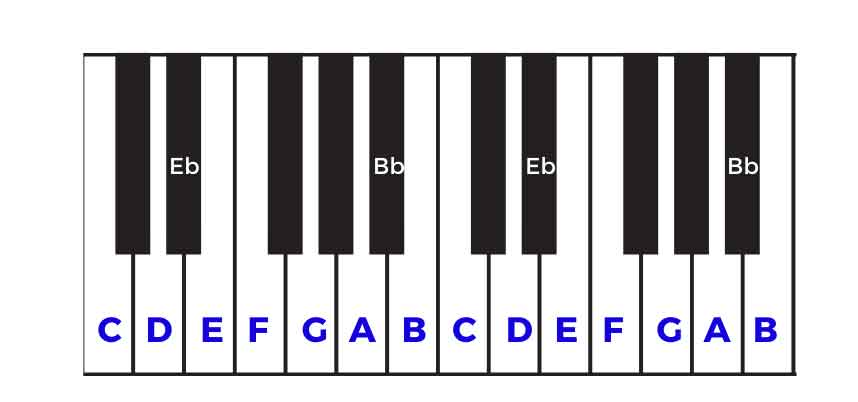
How to make an Eb chord on a piano?
E flat major chord consists of three notes. This chord consists of a root (E♭), a major third (G), and a perfect fifth (B♭) of the major scale on piano.
Eb – G – Bb

That means you play notes 1, 3, and 5 on the scale. When you play these notes simultaneously, the result is an E-flat major chord.
Alternatively, you can use the formula of half steps to build the E flat major chord.
The Formula of Half Steps – R + 4HS + 3HS
Here, the R stands for root, the 4HS for four half steps, and the 3HS for three half steps. You can form almost all major chords on a piano keyboard using this formula of half steps.
Here's how you can build an Eb major chord on the piano using half steps:
First, locate the root note (E flat) on your piano keyboard. On your keyboard, there are two black keys. The second black key is E flat. Now move four half steps to the right to find the major third (G). And then three more half steps to the right to find the perfect fifth (B flat).
In simple terms, once you have found Eb, play the 4th key (G) and the 3rd key after G (Bb) on your piano keyboard. Press all three keys simultaneously to play the E flat major chord.
Eb Chord Piano Finger Position
Before we get to our main topic, “how to play an E flat on the piano,” it’s essential to know what fingers play what keys.
In piano sheet music, the fingers are numbered. They tell players which finger to use to play a specific note.
Let's quickly discuss how your fingers are numbered!
We have five fingers in one hand. And each finger has a number from one to five.
The thumb represents finger 1, the index finger represents finger 2, the middle finger represents finger 3, the ring finger represents finger 4, and the pinky (little) finger represents finger 5.
The numbers are the same on both hands.
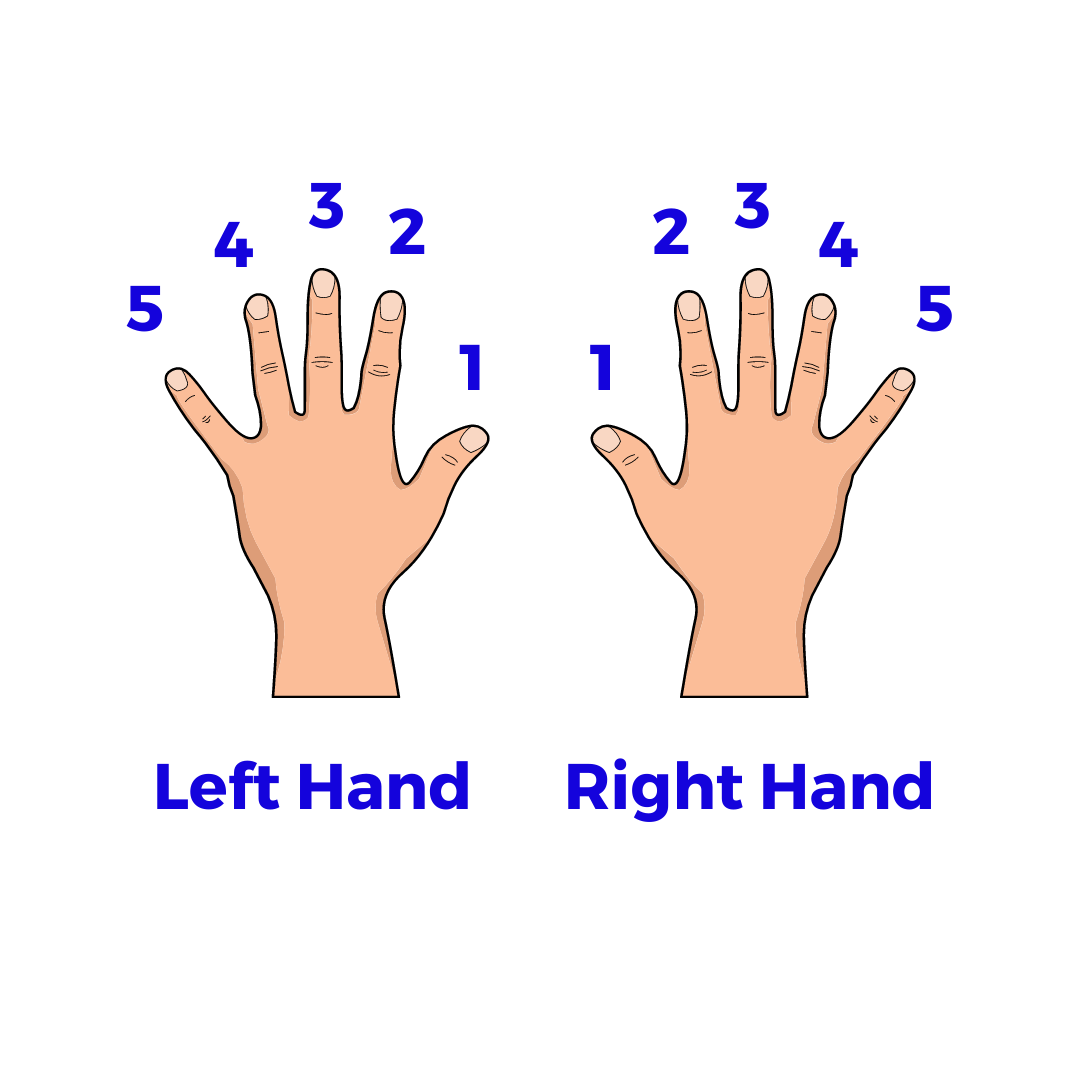
When we play the Eb piano chord on the piano, we typically use the first, third, and fifth fingers.
How to Play an E flat (Eb) On The Piano
Now you know what Eb is and how it is made up. In this section, I'll explain how to play an E-flat piano chord with the right hand, the left hand, and both hands.
Playing the E-flat (E♭) Chord with the Right Hand
You will use the following fingers to play the root position chord with your right hand:
- B♭ - Fifth finger (5)
- G - Third finger (3)
- E♭ - First finger (1)
To play the E-flat major chord with the right hand, place your pinky finger on B-flat, the middle finger on G, and the thumb on E-flat. In this position, the Eb chord is at its root.
See the image below for the correct finger placements to play an E-flat major chord in its root position with the right hand:
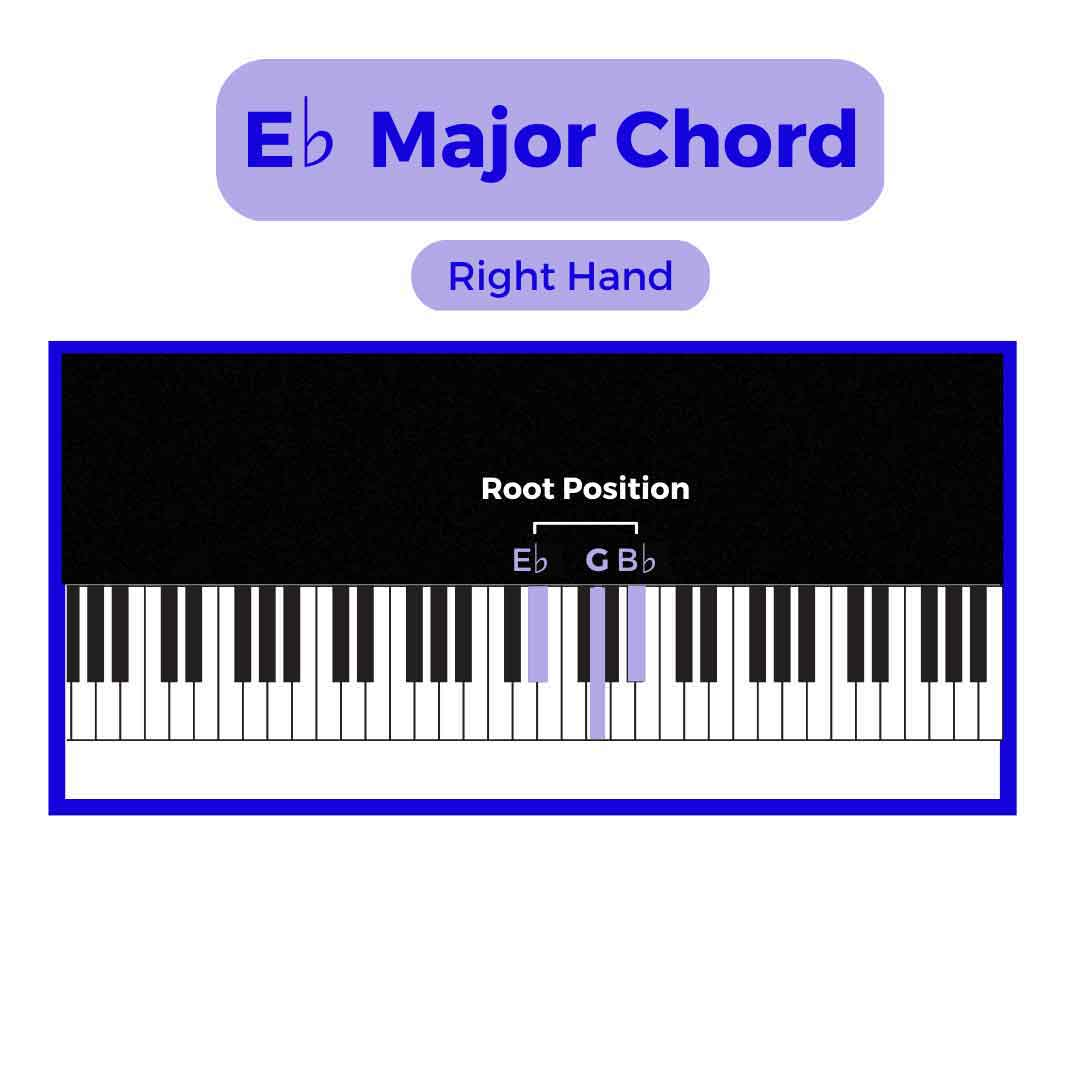
You'll hear the Eb piano chord sound as you press all three keys together.
Remember that you play black keys with your pinky and thumb while you play white keys with your middle finger.
Try to line up your fingers on your piano keyboard and let them relax so you can get a feel for the hand position.
The key difference between a chord and a note (or melody) is that a chord involves multiple keys played simultaneously, while a melody involves multiple notes played in succession.
So, press down on Eb, G, and Bb simultaneously to create the Eb piano chord. Beginners often press down with all four fingers (two and four included), which can create an unpleasant sound.
To avoid this, lift fingers two and four as high as you can while still feeling comfortable, and press down on all three keys at once. It will take some practice to find the right amount of pressure.
Playing the E-flat (E♭) Chord with the Left Hand
We’ve played the Eb major piano chord with the right hand. Now let’s play this chord with the left hand.
You will use the following fingers to play the root position chord with your left hand:
- B♭ - First finger (1)
- G - Third finger (3)
- E♭ - Fifth finger (5)
To play the Eb major chord with the left hand, place your first finger (thumb) on B-flat, third finger (middle finger) on G, and fifth finger (pinky finger) on E-flat.
Remember that your third finger will play a white key, while one and five fingers will play black keys.
The image below shows the correct fingering for playing an E-flat major chord with the left hand:
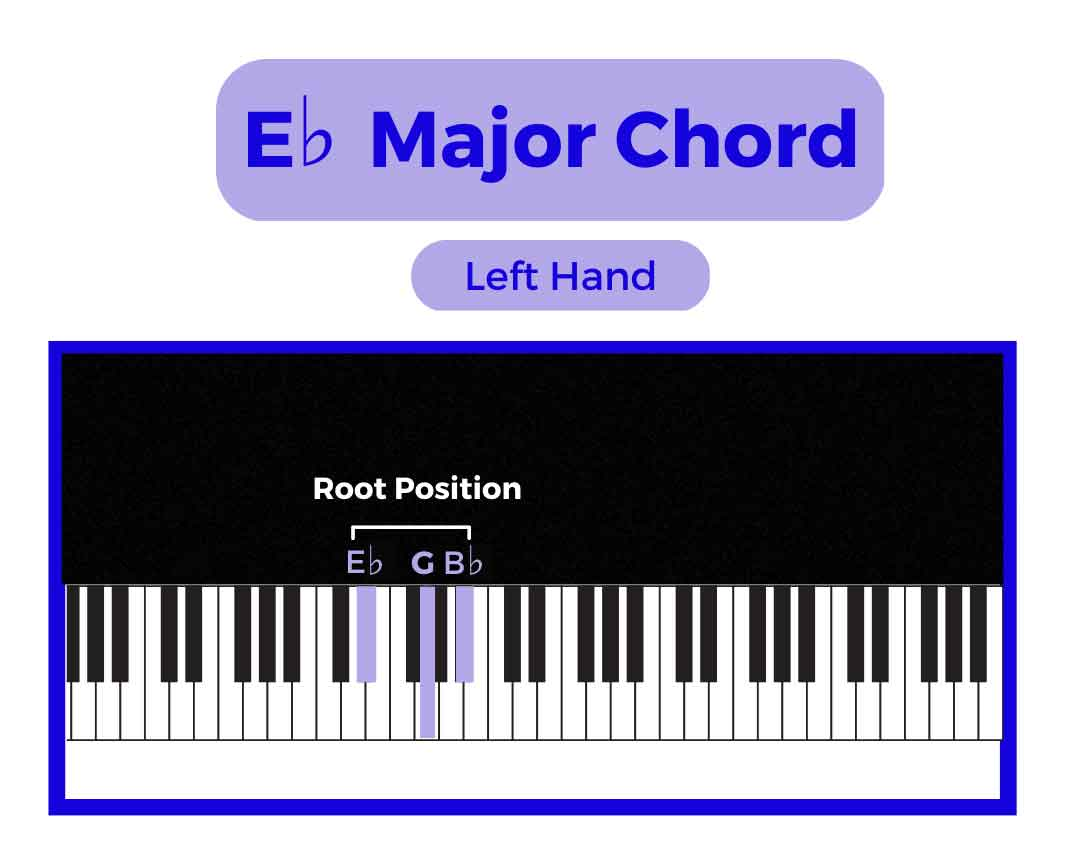
Spend a few minutes to line your fingers up and practice the same as you did with your right hand, ensuring that fingers 2 and 4 are comfortably out of the way. Once you're comfortable, try it with both hands together.
Playing the E-flat (E♭) Chord with Both Hands
Now let's learn how to play the Eb chord with both hands!
First, pick an Eb, G, and Bb in the right hand with the exact finger placement as previously described. Now, place the left hand in the same position as the right.
Once both hands are in position, line up all the needed fingers and press down on all the keys at the same time to play the chord.
For a visual example, here is a diagram:
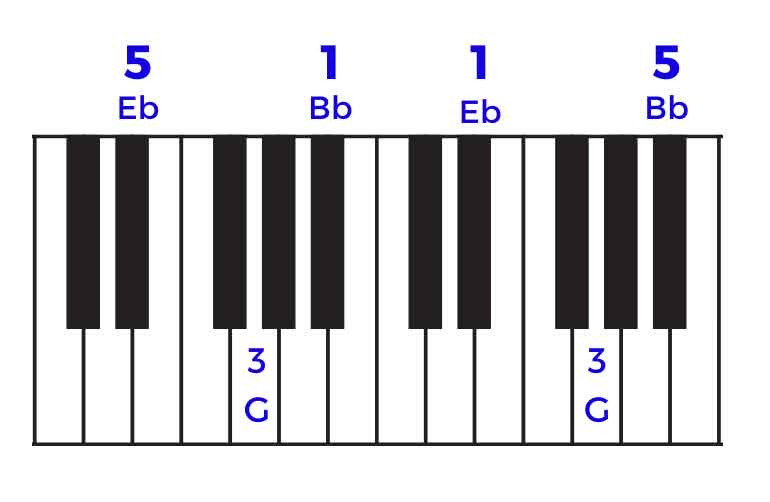
Ensure that your 2 and 4 fingers on both hands are out of the way, and then try it out.
What are the inversions of E♭ major?
In addition to its root chord position, E♭ major chord has two inversions. Here we’ll learn how to play the Eb major chord's 1st inversion and 2nd inversion.
How to play the 1st inversion of E♭ major
The 1st inversion of the Eb chord means that the G is played as the lowest note, followed by E♭ and B♭.
To play the 1st inversion of an E♭ major chord on piano with your right hand, use the following fingers:
- E♭ - Fifth finger (5)
- B♭ - Second finger (2)
- G - First finger (1)
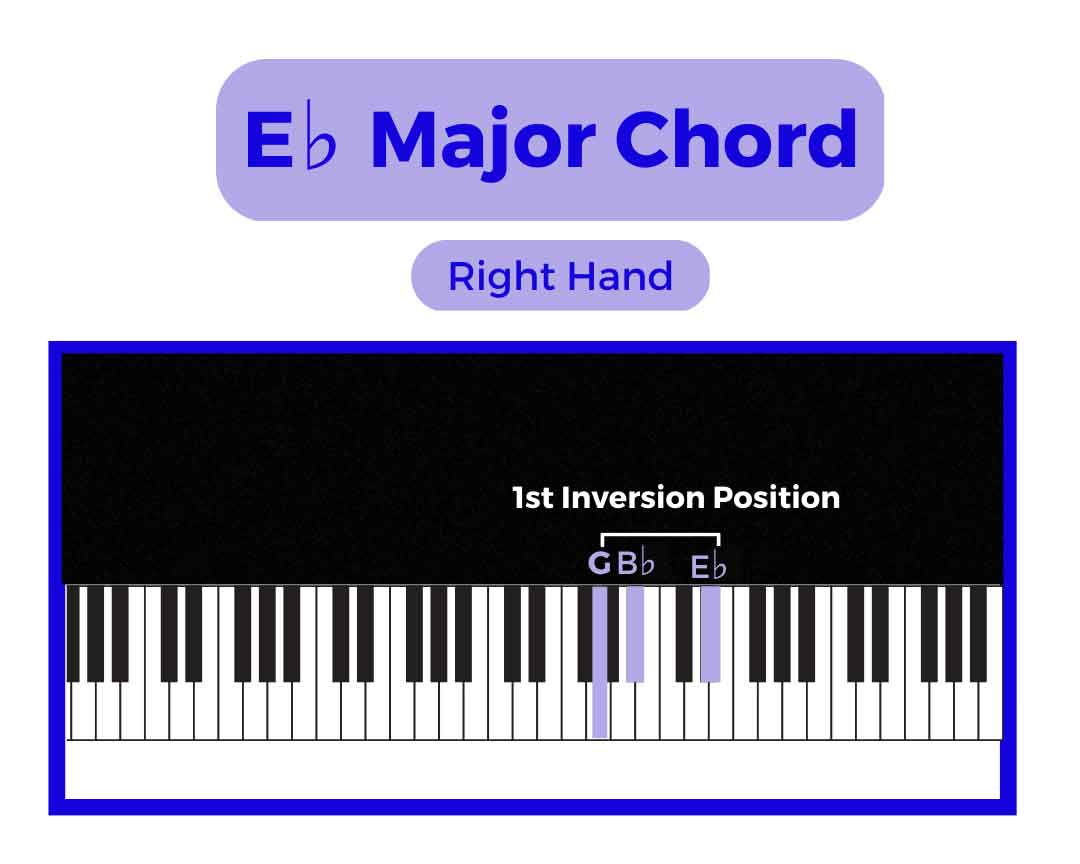
Once you’ve positioned your fingers correctly, press down all the notes simultaneously to create the chord.
How to play the 2nd inversion of E♭ major
The 2nd inversion of the Eb chord means that the note B-flat (Eb) is played as the lowest, followed by G and E♭.
Use the following fingers on your right hand to play the 2nd inversion of E flat major:
- G - Fifth finger (5)
- E♭ - Third finger (3)
- B♭ - First finger (1)
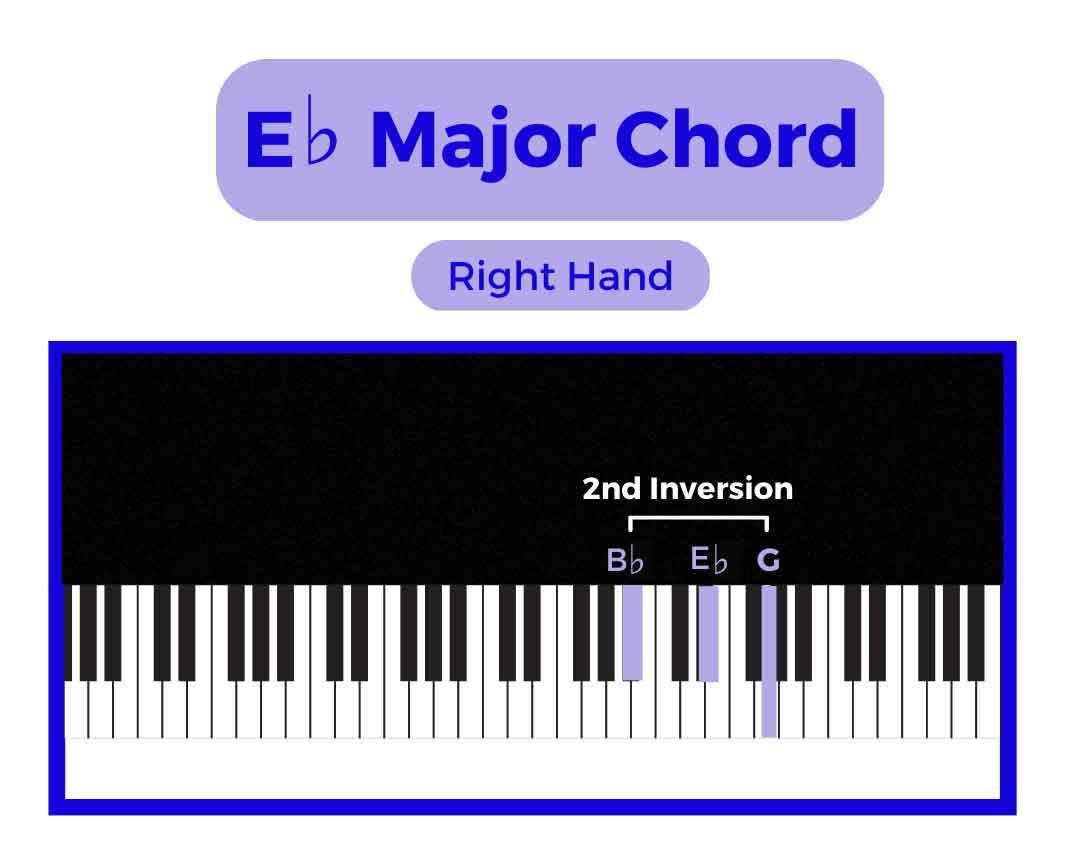
Practice playing this piano chord a few times until you are comfortable with the fingering and the sound of the chord.
Conclusion
As you can see above, I've explained how to play E-flat (Eb) on the piano. Now you know what notes make up the E-flat major chord and how to play E-flat major scale well.
Playing an E flat on the piano is a simple but essential skill for any pianist. If you follow the steps outlined in this blog post, you should be able to play an E flat on the piano with your right hand, left hand, and both hands together.
Practice is key, so keep practicing until you feel comfortable and confident playing this note. If you devote some time and effort, you'll soon be able to play an Eb major scale like a pro.
So, grab your piano keyboard and start practicing the E-b major chord!
Related Topics
- Learn How To Play Keyboard Synthesizer
- How Many Keys are Most Electric Keyboards?
- Left hand Exercises Piano
Harlan Kilstein began playing piano during covid with no piano background at all. He taught himself how to play learning what to do and what not to do.
Today he's an advanced intermediate player and can help you grow in your skills because he learned all this on his own.

